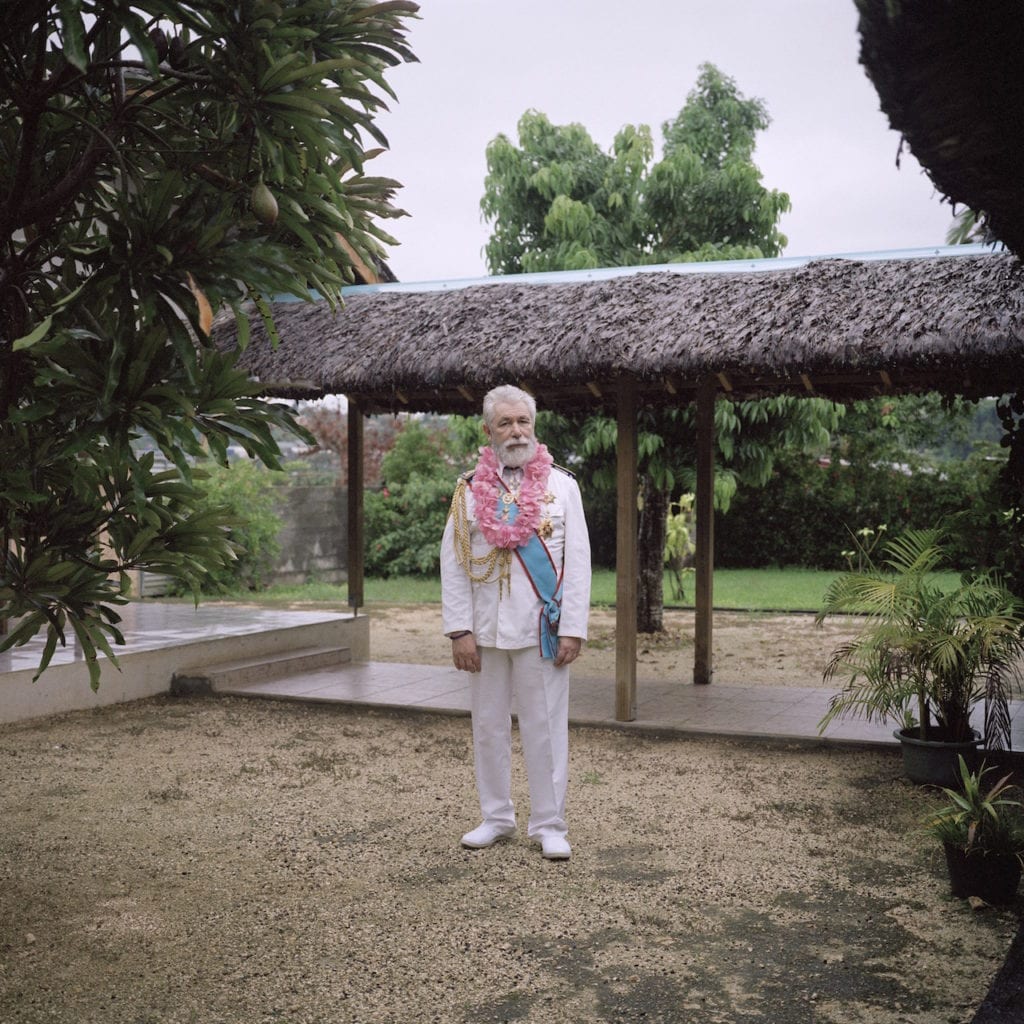On the eve of the First World War, the British Empire accounted for over 23 percent of the world’s population: some 412 million people spread across nearly a quarter of Earth’s land area. At its very furthest reaches, the map of the Empire showed what looked like a scattering of tiny dots on the great blue expanse of the Pacific. Named Vanuatu, they make up a one-nation archipelago of more than 80 islands stretching across 800 miles of the South Seas. Located more than a thousand miles northeast of Australia, it has a population of less than 300,000 people.
It’s a place few Britons have heard of but in Vanuatu, independent since 1980, the idea of ‘Britishness’ has weaved itself into the islanders’ ancestral, and even spiritual, beliefs. “Stories flourish in isolation,” says Christopher Lord, the Istanbul Bureau Chief for Monocle magazine, who has been collaborating with photographer Jon Tonks since the pair worked together on a story in Algeria as the Arab Spring was erupting.
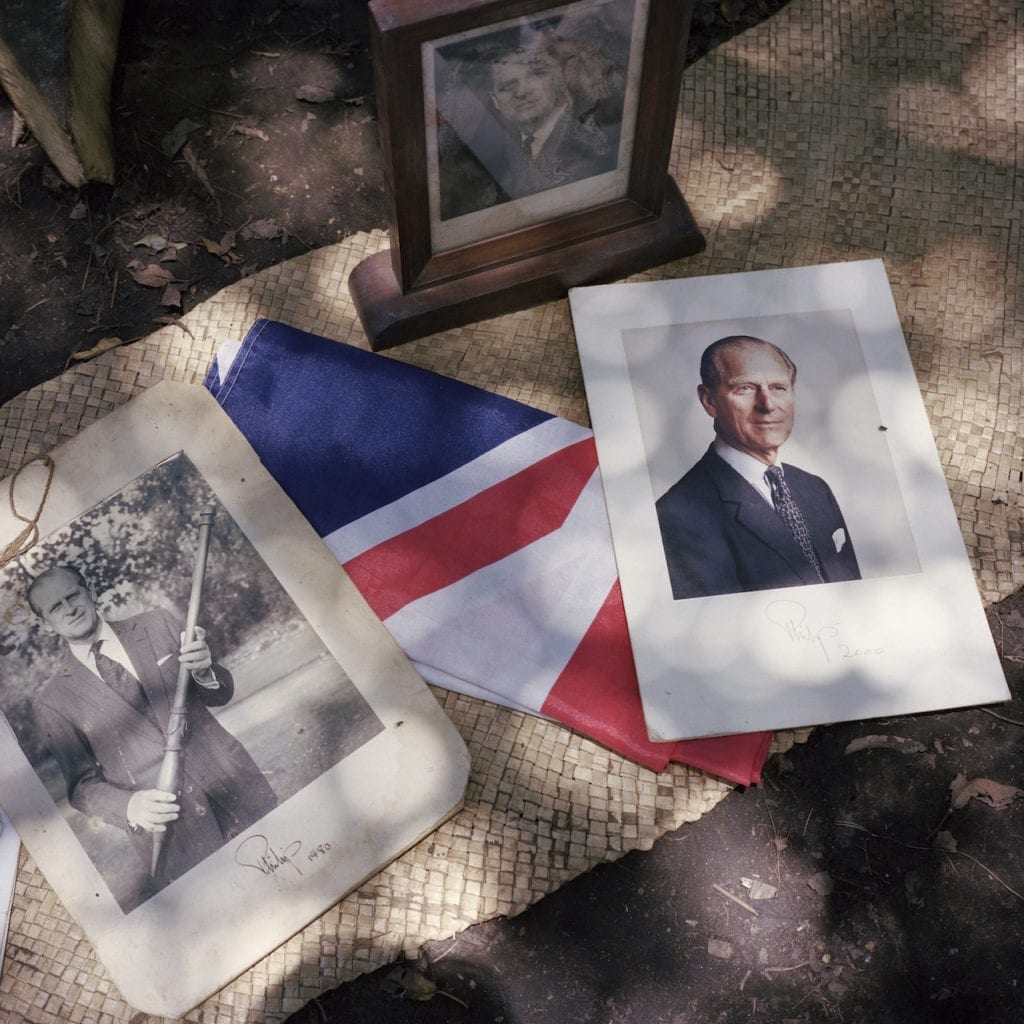
The island country has long been a source of fascination for 35-year-old Tonks, who spoke about it with BJP for our March 2017 issue. He began this ongoing project, Cargo, shortly after the conclusion of his acclaimed Empire series, which explored the far-flung remnants of British colonialism in the South Atlantic. When we meet in a pub near his home in Bath, Tonks explains that his motivation for Cargo is to “explore belief systems, the country’s progress in the 21st century and the wider phenomena being conjured around them”.
Tonks and Lord went to Vanuatu after hearing about the legend of, and movement surrounding, John Frum (sometimes called John Brum, Jon Frum or John From) and his significance for the ‘Cargo Cults’ of the island of Tanna. The work looks at not just the geography and the people of the island, but also its history and customs – exploring how, in this remote former fiefdom, Anglo- American traits and cultural figures have been assimilated in strange and unpredictable ways.
The John Frum movement can be traced back to the early 1940s, when 300,000 US troops were stationed in Vanuatu during the Second World War, bringing with them huge amounts of supplies (or ‘cargo’). After the war and the departure of the Americans, followers of John Frum – the name is thought to be a corruption of “John from (America)” – built symbolic landing strips to encourage US aircraft to land and return with their ‘cargo’.
“‘Cargo Cults’ were first documented by missionaries at the end of the 19th century, when much of the Pacific was being converted to Christianity,” Tonks says. “By the world wars, a belief had developed amongst islanders in Vanuatu – what was then called the New Hebrides – about a man from a distant land who would one day return to reinstate their traditional way of life and give them their rightful wealth: the cargo.”
Over time the movement developed its own rituals, a (non-violent) ‘army’ and a political party that has opposed the centralisation of government in Vanuatu. Celebrating its 50th anniversary on 15 February – John Frum Day – in 2007, its then leader, Chief Isaak Wan Nikiau, said that the mythical figure was “our God, our Jesus”, who would eventually return. It was one such John Frum Day that first drew Tonks to the island to photograph the movement’s parades.
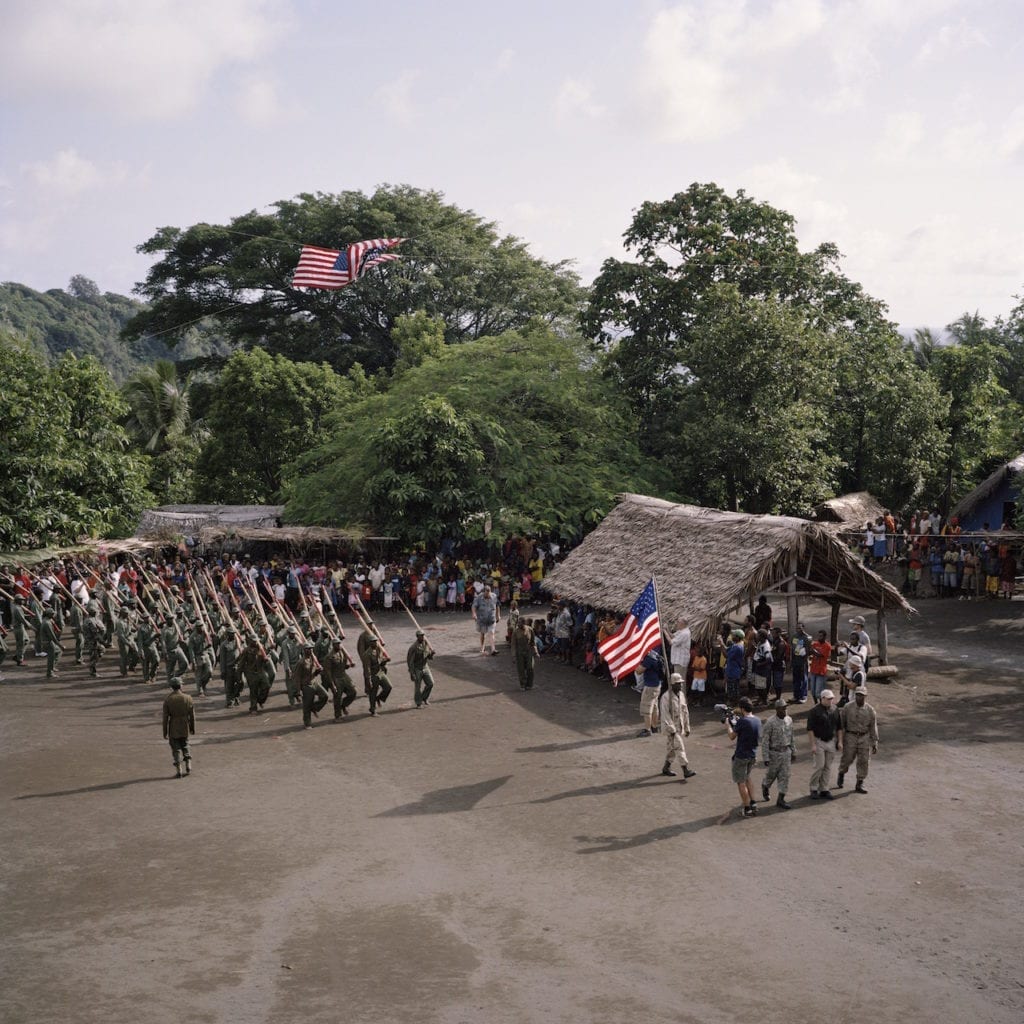
“The villagers march around with bamboo sticks for guns, imitating American GIs,” he says. “It’s a ceremony designed to emulate the American presence during the Second World War. They felt that if they recreated the conditions in which Frum first experienced Vanuatu, then he will appear again.
“The stories contained in Cargo,” says Tonks, “introduce these beliefs, which are still practised today: the village that says Prince Philip, husband of Queen Elizabeth II, was born of a mountain; another that believes the Messiah is an American GI called John, with followers that still parade through the streets with their ‘guns’ and Star-Spangled Banners; an independence movement that venerates a dissolute French adventurer as its king.”
But, more than the people of Vanuatu, Tonks and Lord saw the crux of this project as primarily about the characters the island attracts from the outside. “As we continued to research the diversity of the so-called ‘Cargo’ beliefs, we found these stories of people – mostly Europeans and Americans – being drawn to the islands by the Cargo movements and sometimes these ended up as strange, cautionary or unsavoury tales,” Lord says.
“We’ve tried to understand why those people would give up a proportion of their life to ingratiate themselves into these Cargo narratives. What is it they’re looking for? This begs the question of who the so-called ‘Cargo cultists’ are – is it the Tannese people scanning the horizon for returning cargo, or is it those foreigners heading to the South Pacific in search of something miraculous?”
Like his earlier work for Empire, Tonks shot Cargo in square format, capturing portraits of the inhabitants who have grown up in the islands as well as those – of ambiguous motives – who come to visit from Europe and America. He carefully orientates each figure in their environment, detailing how they fit into such surroundings – or not, as the case may be. The eye for detail that elevated Empire is evident here too, but a newer, more metaphorical inquiry is also at play.
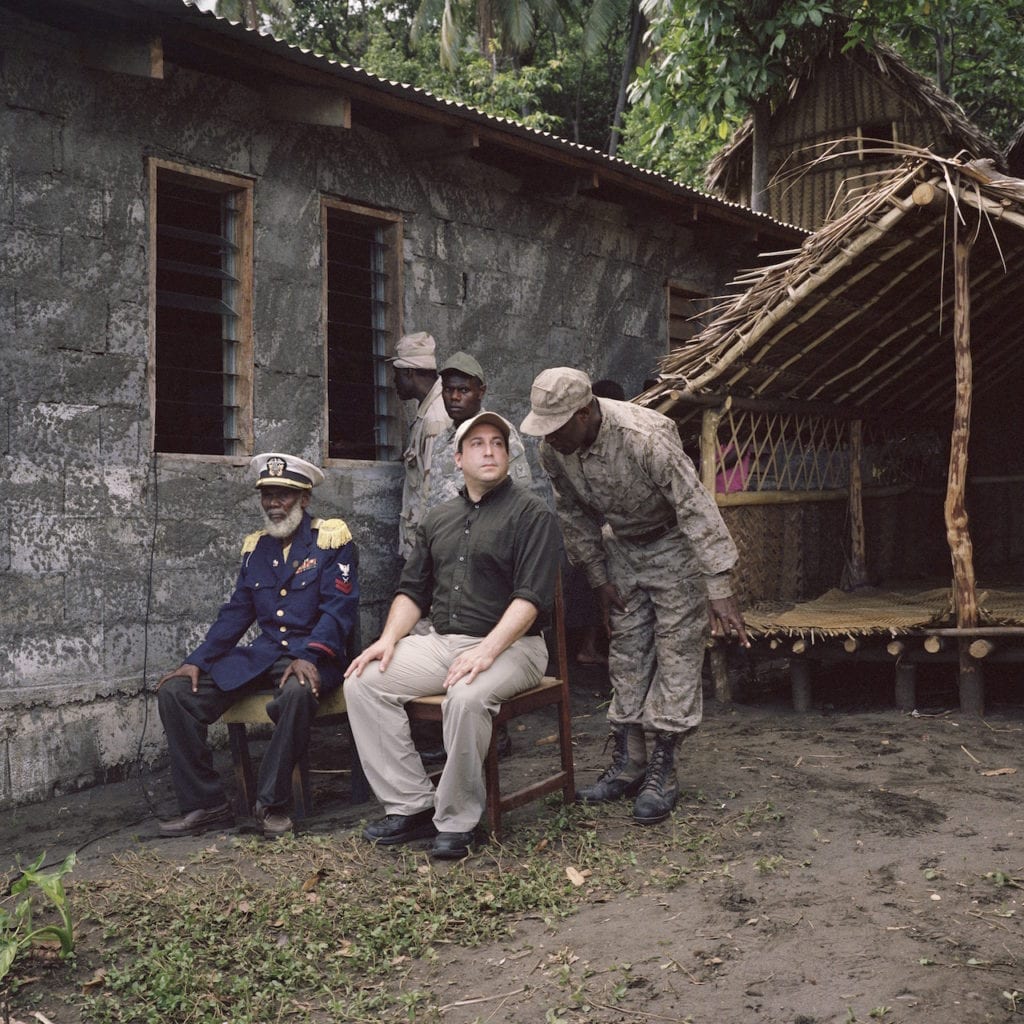
The portraits tell us something about the individuals in front of Tonks’ lens but they are also representations of the landscapes, intermingled cultures and ancestries that surround them. Layered onto this, Tonks explores how British imperialism and colonialism, along with the use of some of the islands by the US military during the Pacific war, has embedded itself into the Vanuatuan culture – witness Tonks’ photographs of the people who believe Prince Philip, The Duke of Edinburgh, is a living deity.
“You have all these itinerant Western journalists – including me – turning up to cover the event,” he says. “And that, in itself, became the main point of interest for us; how and why a few characters are attracted to the islands.”
As a case in point, Tonks describes how he heard whispers that a man from The White House was coming to the parade. An American in beige slacks appeared and took a seat next to the village’s tribal chief. The man, whose name was Cevin, was an independent filmmaker from Boston who, he said, wanted to make a movie about the return of John Frum. He gave the citizens of the island necklaces with his own face on them.
“We were witnessing this guy dressing up and doing this role-play as if he were the God of their belief system,” Tonks says. “We didn’t know how much the locals knew about him. He gave a speech about how America will always help Vanuatu fend off colonialism from the UK.”
There is no judgement here. Tonks has an ability to photograph with a warmth and respect for his subjects, whoever they are, imbuing his work with a subtle, and very British, sense of humour. “I never wanted to do a series saying, ‘Look at these guys with their strange beliefs.’ We went there with an open mind, just to mine the place and see what it revealed.”
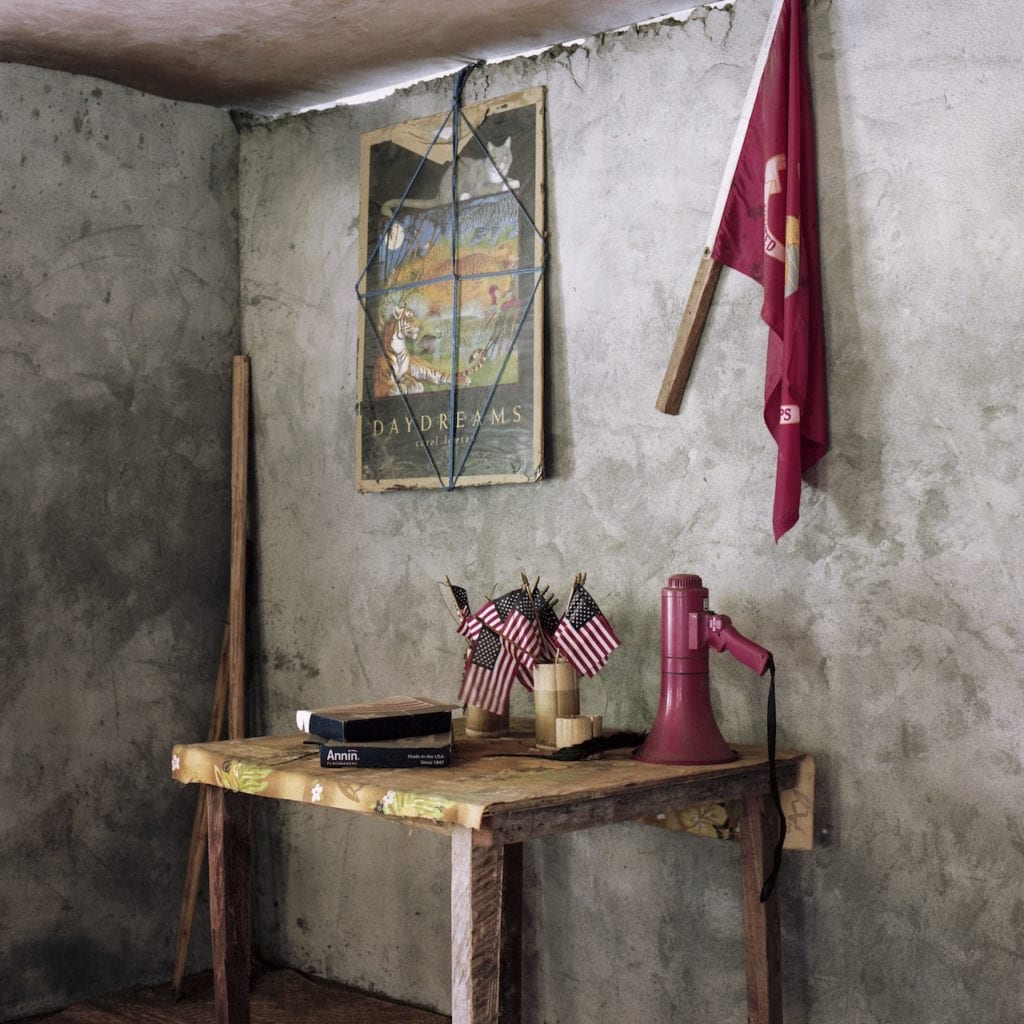
Cargo is very much ongoing – Tonks has made three trips to the islands and has another planned. But he is previewing some of his work-in-progress at Format Festival, having submitted it to the event’s open call for its Habitat theme, where it came to the attention of BJP editorial director and Format panel judge Simon Bainbridge. Tonks hopes to use the exhibition as a testing ground for the series before developing it into a wider body of work.
The book they are working on is divided into four sections. The first, titled Cargo, covers the story of John Frum and Cevin, the Bostonian filmmaker who was held in such high esteem by the John Frum tribe. Then there’s Prophecy, the story of the Prince Philip Movement, which includes portraits of an enigmatic, long-haired Norwegian called Frank, who some of the islanders considered to be the fulfilment of the prophecy.
A section titled Coconut looks at the Coconut War in Espiritu Santo (one of the shortest wars in history), in which islanders, seeking independence from the Anglo-French government, were funded by the Phoenix Foundation in the US. Lastly, the chapter King, which looks at Claude, a Frenchman who claims to be the monarch of the southerly island Tanna and whose lineage follows on from a man called Antoine Fornelli, a French militant who tried to claim independence for Tanna in the 1970s.
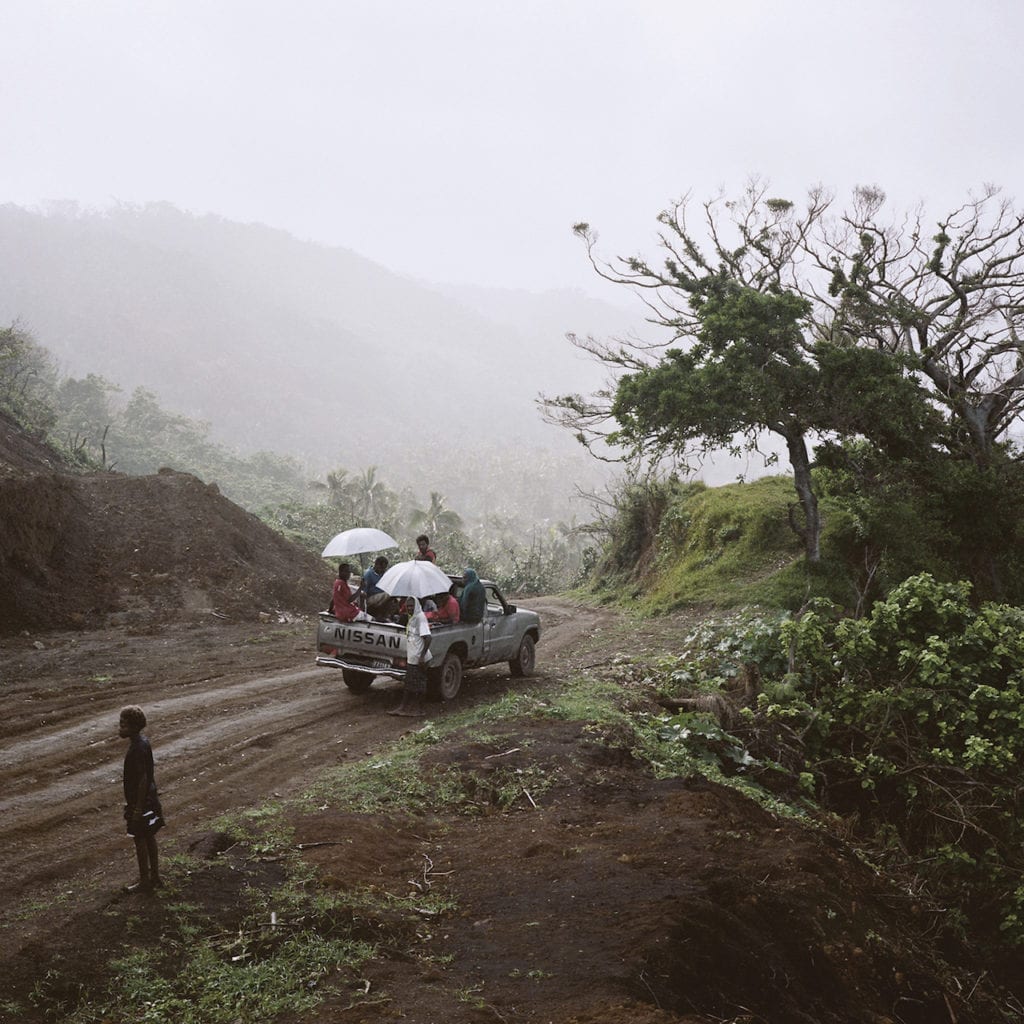
Although Cargo takes on more expansive themes, it is in many respects a companion work to Empire, published in book form by Dewi Lewis in 2013. Seven years in the making, Empire focused on four remnants of the British Empire in the South Atlantic – St Helena, Ascension Island, Tristan da Cunha and the Falkland Islands. Although Tonks had been recognised for his work over the preceding decade (his series on the Ascension Islands was featured in BJP in 2008), here was a more ambitious and expansive work.
Tonks travelled more than 60,000 miles around the South Atlantic, gaining access with the aid of military outposts and airstrips and even, at one point, a voyage aboard the last working Royal Mail vessel, RMS St Helena. In total, Empire comprised 400 rolls of film, 24 flights and 32 days at sea. He began with Ascension Island in July 2007, boarding a plane at RAF Brize Norton in Oxfordshire and eventually arriving at Wideawake Airfield, a landing strip surrounded by the black lava that characterises the volcanic island.
The runway has played a critical role for Britain’s military since the Second World War and was used by RAF aircraft to refuel en route to the Falkland Islands during the 1982 war with Argentina. For a few months that year it was the world’s busiest airstrip.
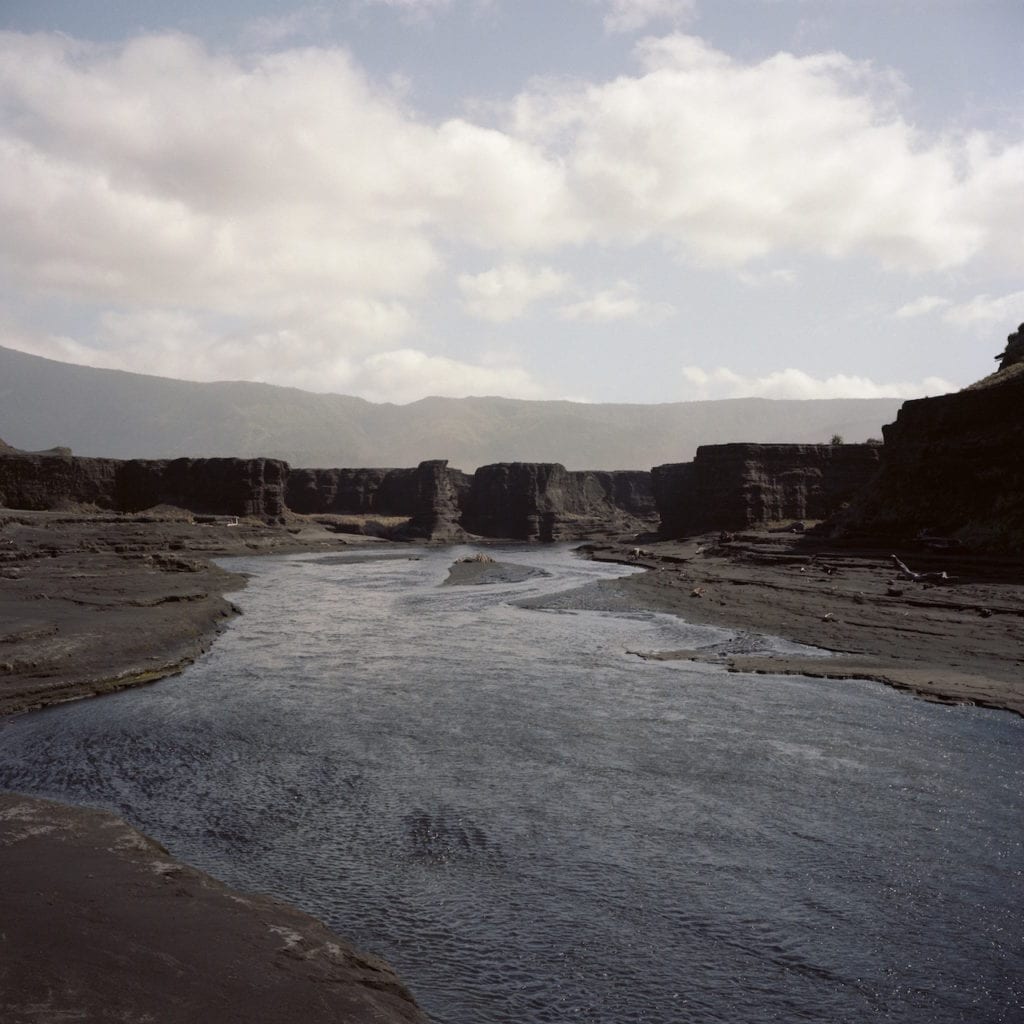
On Ascension, Tonks photographed a remarkable detail of the landscape – one untouched, unmarked and barely remarked upon by the locals of the island. In the 1800s, the naturalist and father of evolutionary theory Charles Darwin visited the island. Arriving at its dormant volcano, he launched an ambitious experiment to create a source of fresh water, and in the process started the world’s largest artificial ‘cloud forest’.
The steep, apparently barren part of the island was named Breakneck Valley, and it was here that he planted seeds carried from England in the hope of generating an environment that would produce rainfall. Tonks photographed the results of this 180-year-old experiment, now a vast forest covering the valley’s vertigo- inducing sides.
The image, of course, can be interpreted as the most extreme example of colonialism; the transformation of the earth itself. In the book it was juxtaposed with more obvious examples of the Empire’s legacy, from Margaret Thatcher memorials in the Falklands to draft ale, cheese-and-onion crisps and pork scratchings in an island pub. But it was Tonks’ appreciation of the people that stood out: the teenage beauty queen on Ascension Island, the church-goers of St Helena and Tristan da Cunha’s potato farmers.
He has continued that work in Cargo, in a series that further reaches into ancestry, community, colonialism and spiritual belief systems. “I’m interested in the legacy of colonialism,” Tonks says. “But this is not meant as a follow-on to the previous work. I just have a fascination with this remote place with a bizarre socio-political backdrop.
“It’s riddled with stories. Empire was an opportunity to go somewhere and find interesting stuff. The story, in many respects, was the fact I was there, photographing what was around me. Cargo is about following a thread through – to understand phenomena that can never quite be understood.”
jontonks.com Format Festival opens this weekend, and the exhibitions are on show until 23 April. www.formatfestival.com This interview was first published in BJP’s March 2017 issue, which was themed Habitat and produced in partnership with Format International Photography Festival. Back issues can be bought from www.thebjpshop.com
